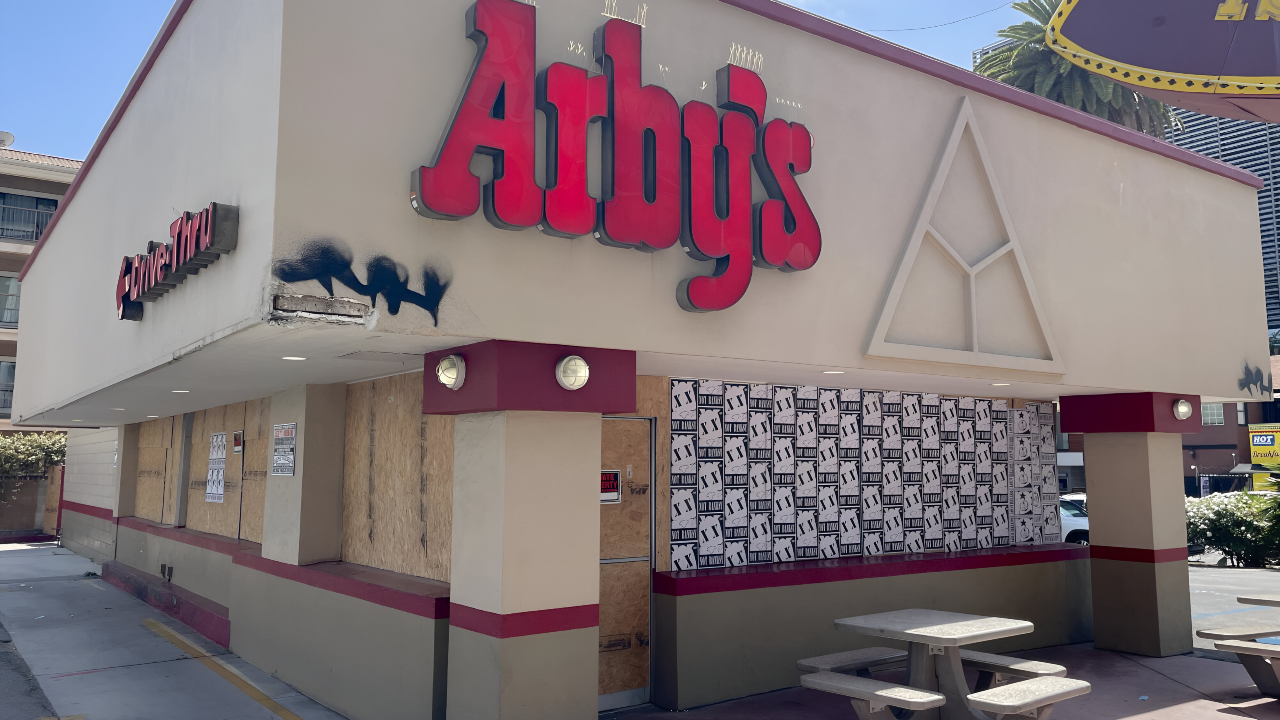
Arby’s shut down 14 restaurants across eight U.S. states during 2025, continuing a broader industry decline that hit Wendy’s, Denny’s, and Starbucks even harder. The chain closed stores gradually throughout the year, starting in January and continuing through November, rather than all at once.
These closures in Tennessee, California, Delaware, Florida, Maryland, New Jersey, Washington, and South Carolina are expected to cost between 280 and 420 jobs in 2025 alone. When you add in 48 store closures from 2024, Arby’s has now shut down 62 locations over a two-year period, eliminating between 1,240 and 1,860 jobs in total.
The figure of 1,400 jobs lost represents the midpoint of this range. Arby’s parent company, Inspire Brands, reported $29.5 billion in total sales for 2024, but Arby’s itself took the biggest hit among all Inspire brands—dropping 6.3% in sales. The sandwich chain ranks third in its market, behind Subway and Panera.
Arby’s operates mostly through franchisees, who run 2,286 of the company’s 3,365 total stores. These franchise owners face constant pressure from rising wages, food costs, and rent payments, resulting in razor-thin profit margins, especially in lower-income neighborhoods.
THE SQUEEZE ON WORKERS AND CUSTOMERS

Rising menu prices have created a squeeze for both Arby’s customers and workers. Since 2014, Arby’s prices have climbed 55%, but these increases haven’t kept pace with the chain’s own rising costs for labor, ingredients, and facilities.
Arby’s customer base typically earns less than $75,000 per year, and when menu prices skyrocket without corresponding wage increases, customers simply order less frequently. The stores that closed employed workers earning between $15,000 and $25,000 annually—many of whom received few or no benefits.
Unlike some competitors, Arby’s provided no reports of severance packages or job training programs to help displaced workers transition to new employment. The broader fast-food industry faces the same structural crisis.
Wendy’s plans to close 200 to 350 locations, Denny’s shut down 70 to 90 restaurants, and Starbucks laid off 900 corporate staff members. These closures reveal a fundamental shift in how Americans spend money on food.
Premium chains like Panera and Chipotle are outperforming value-focused competitors. Delivery services and ghost kitchens (restaurants with no storefronts) have altered consumer habits, while families earning under $75,000 are increasingly skipping traditional “cheap eats” restaurants altogether.
Arby’s and Inspire Brands have remained silent about the closures and layoffs, fueling speculation about the company’s future. Wendy’s, by contrast, publicly explained its decisions through official press releases.
This silence from Arby’s leadership has created uncertainty for franchisees and employees, with industry experts suggesting that management may not yet be prepared to announce major strategic changes.
WHAT COMES NEXT FOR ARBY’S AND THE FAST FOOD INDUSTRY

Looking ahead to 2026, industry analysts anticipate further consolidation in the fast food sector. If prices remain high and worker wages fail to keep pace with those increases, Arby’s will likely close more stores.
Chains like Chipotle could capture even larger market share as consumers vote with their wallets for premium options. The decisions Inspire Brands makes in late 2025 will determine whether Arby’s can recover or continue to shrink. Federal regulators are also stepping in.
The Department of Labor is monitoring how restaurants notify workers about job losses and considering new rules that would require companies to provide advance notice or severance assistance to affected employees. However, history shows that recovery is possible.
Subway, Denny’s, and Red Lobster all experienced significant contractions but managed to rebuild and regain market credibility. Arby’s will need strategic investment and genuine adaptation to survive the current fast-food landscape transformation.
The chain’s survival ultimately depends on its ability to respond to mounting economic pressures and evolving consumer preferences—with potential for both further contraction and potential renewal if leadership acts decisively.